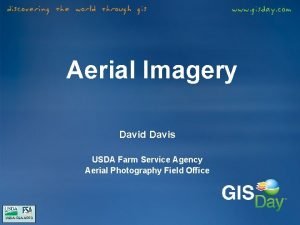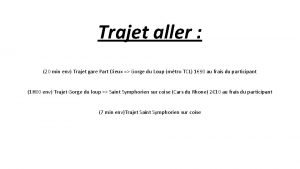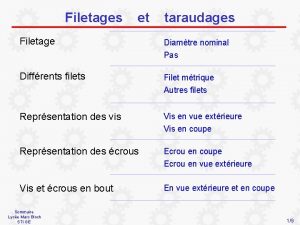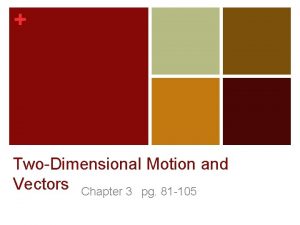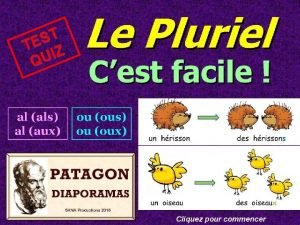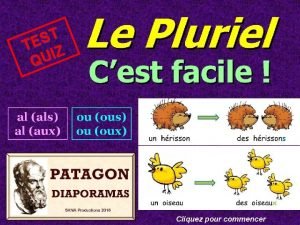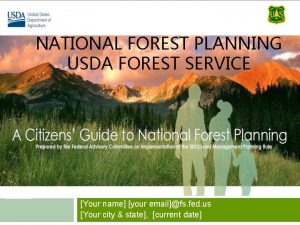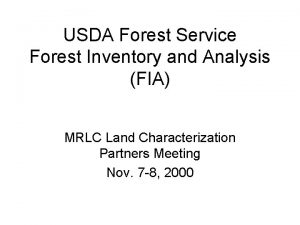USDA Forest Service Ashley National Forest Flaming Gorge







- Slides: 7

USDA Forest Service Ashley National Forest Flaming Gorge Ranger District NOXIOUS WEEDS MANAGEMENT PROGRAM Cherette Bonomo-Rangeland Management Specialist

Although Flaming Gorge Reservoir is a popular recreation attraction, no other feature of the Ashley National Forest contributes more to infestation of noxious weeds than does this large reservoir. Millions of visitors annually have high potential for introduction of noxious weeds. The fluctuating water level of the reservoir makes ideal habitat for noxious weeds to establish and thrive.

Species Treated: -Thistles -Perennial Pepperweed -Whitetop (Hoary Cress) -Knapweeds -Black Henbane -Hounds Tongue -Salt Cedar -Russian Olive -Common Reed Treatment Methods: -Preventive -Manual -Mechanical -Chemical -Biological

Avg Treated Acres/Year on FGNRA-WY: approx. 800 -1000 acres Treatments completed by: FS weeds crews and Sweetwater County Weed & Pest District Funding Sources: -FS Program Funds -Wyoming Landscape Conservation Initiative (WLCI) -Wyoming Wildlife & Natural Resource Trust (WWNRT)

Before/After-Camera Point Study: 82 -4 Blacks Fork In a cooperative treatment with Sweetwater Co. , a dense stand of perennial pepperweed was treated with Escort. The pepperweed was nearly eliminated. One year after initial treatment, the green areas seen are dominated by native, sod-forming grasses. Foxtail barley dominates the light colored areas.

Other Projects…… ARS Research-Halogeton Studies -Indian ricegrass, tall wheatgrass, Gardner’s saltbush (doesn’t appear to be options for initial rehabilitation efforts) -Gardner saltbush is difficult to establish from seed -Seeded plots need multiple years to determine overall competiveness -Russian wildrye and forage kochia are competitive with halogeton *Bozoisky II-Russian Wildrye, Snowstorm & Immigrant-Forage Kochia ---> January 2017

As it is elsewhere, noxious weed control on the Ashley National Forest will require long-term (never-ending) commitment to prevention, early detection, rapid response, control and management, and rehabilitation and restoration.

